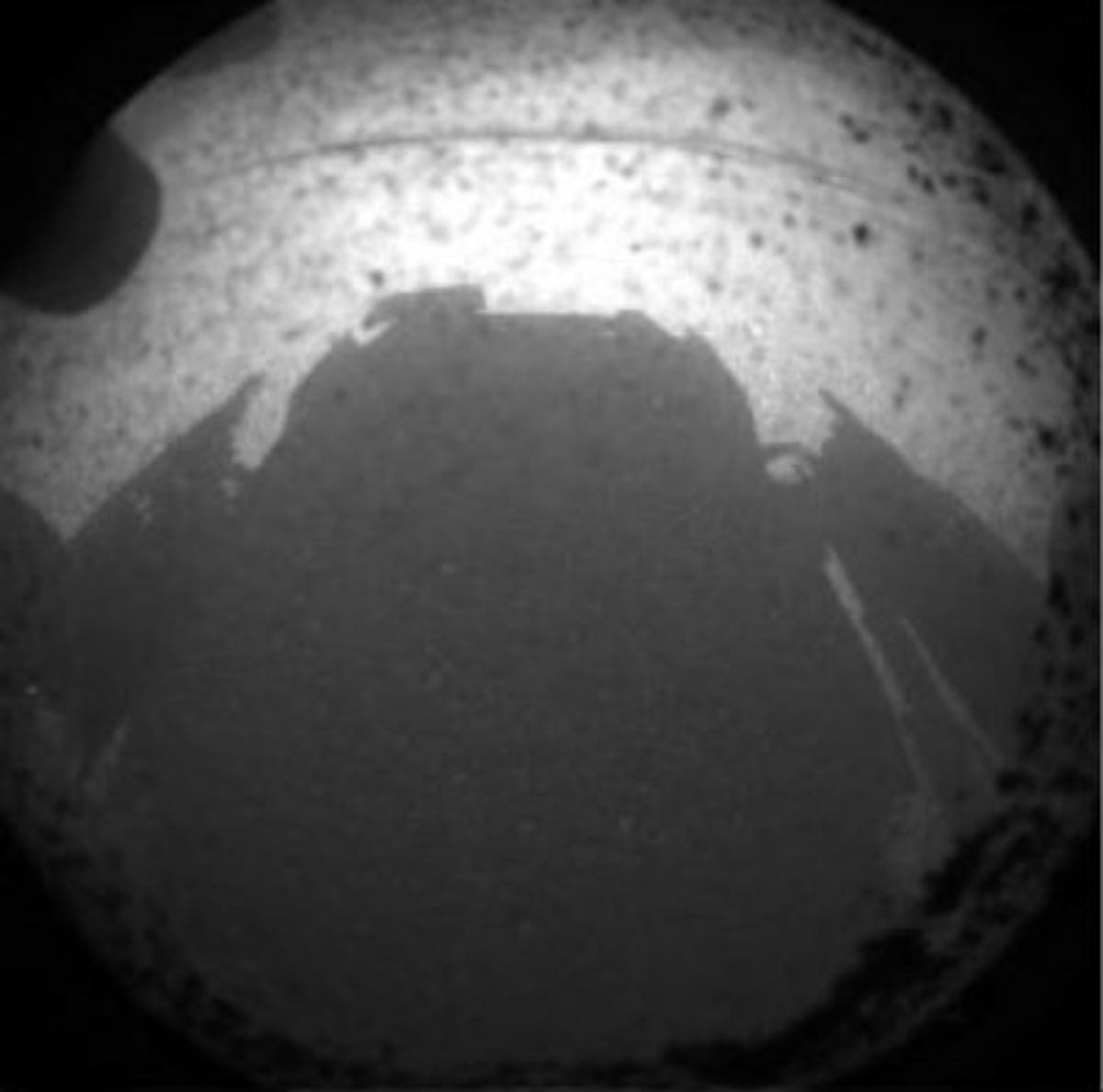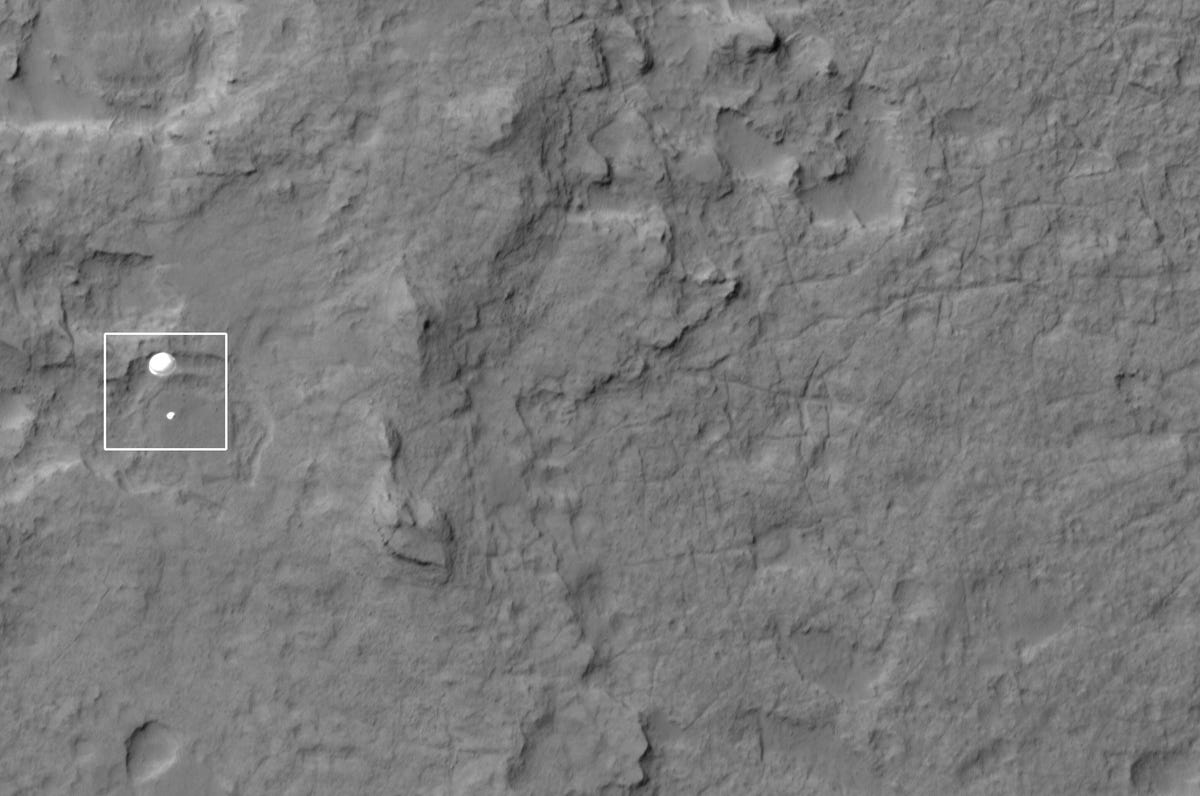Curiosity rover's first photos from Mars (pictures)
The Mars Science Laboratory vehicle has taken its first very big step -- it has landed on the surface of the Red Planet. Like any good tourist, it's sent home some snapshots.

Curiosity's shadow
This image is one of the very first sent home from Curiosity, showing the rover's own shadow on the Martian surface. NASA says that the clear dust cover is still on the camera, hence the dust seen around the edge of the fish-eye image. The photo was taken by one of the rover's front hazard-avoidance cameras on the vehicle's front end, at only one-quarter of full-resolution.
Larger color images should come later in the week when Curiosity's mast is deployed. The mast carries high-resolution cameras.
Editors' note: This slideshow was updated several times on August 6 and 7 as new images became available.
First picture napped by NASA's Curiosity rover
Wheels down
While engineers did not expect pictures right away, blurry low-resolution thumbnails from the rover's rear hazard avoidance cameras were transmitted within minutes of touchdown showing a wheel on the surface of Mars.
"Odyssey data is still strong," said mission control commentator Allen Chen. "Odyssey is nice and high in the sky. At this time we're standing by for images..."
"We've got thumbnails," someone said.
"We are wheels down on Mars!" Chen reported.
Mount Sharp
Mars landscape in color
A clutch of cameras
Nine other cameras are hard-mounted to the rover: two pairs of black-and-white Hazard Avoidance Cameras in the front, another two pair mounted to the rear of the rover, and the color Mars Descent Imager (MARDI).


